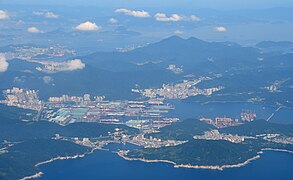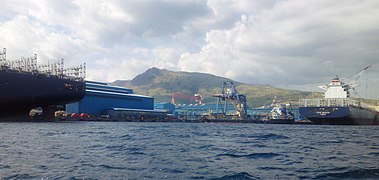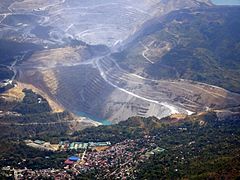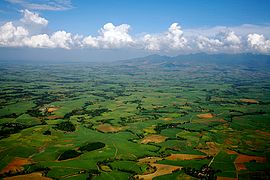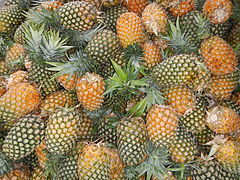Oyashima
| This article is a stub. You can help IxWiki by expanding it. |
State of Oyashima Oyashima Kokka (国家 むつとり) | |
|---|---|
Anthem: A Hundred Isles | |
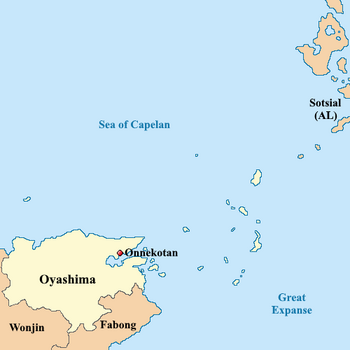 Map of Oyashima | |
| Capital | Onnekotan |
| Official languages | Oyash |
| Recognised national languages | Burgoignesc |
| Recognised regional languages | Mutsutori, Danehonger |
| Ethnic groups | Oyashi, Mutsutorine, Danehonger |
| Religion | Shinto, Confucianism, Mercantile Reform Protestantism |
| Demonym(s) | Oyashimane |
| Government | Elective Federal Constitutional Monarchy |
• Lord of Lords (Omo no Ryōshu/主の領主) | Koshamain Itakshir |
| Legislature | Assembly of Lords (Omo no shūkai/主の集会) |
| Area | |
• | 495,412.926 km2 (191,280.000 sq mi) |
| Population | |
• 2030 census | 37,435,619 |
• Density | 75.564/km2 (195.7/sq mi) |
| GDP (nominal) | estimate |
• Total | $1,178,959,949,167 $1.178 trillion |
• Per capita | $31,493 |
| Gini (2020) | 57.4 high |
| HDI (2024) | 0.691 medium |
| Currency | Yun (¥) |
| Time zone | UTC0 (time zone) |
• Summer (DST) | UTC+0 |
| Date format | dd-mm-yy |
| Driving side | right side |
| Calling code | 6-(860) |
| ISO 3166 code' | MU |
Oyashima is an industrialized and modern nation in northeastern Audonia, in the Dolong region. It is at the confluence of the Sea of Capelan and the Great Expanse. It is bordered in the southwest by Wonjin, Fabong in the southeast, and shares a maritime border with the Alstinian islands of Sotsial in the north.
Oyashima is a elective federal constitutional monarchy. It has a unicameral legislature called the Assembly of Lords, a supreme court, and an executive, the Lord of Lords, the elected monarch.
It is a member of the League of Nations, the International Red Cross and Red Crescent Movement, and many other international organizations.
It has a strong market economy focused on exports, in collaboration with Burgundie whose companies have a stake in many of the country's export and shipping activities.
Many scholars have criticized its economic governance and politics, arguing that it is merely a client of the Burgoignesc thalattocracy's economic and cultural might.
The people of Oyashima are predominantly ethnically Mutsutorine however the ruling class and therefore culture are Oyashi (with large minorities of Danehongers), speak Oyash, and most practice Shinto.
Demographics
Self-reported ethnic origin in Tapakdore (2030)
-
Danehongers
-
Danehong woman
-
Mutsutorine woman
-
Mutsutorine woman in traditional dress
-
Group of Mutsutorine women
-
Young Mutsutorine man
-
Older Mutsutorine man
-
Mutsutorine politicians
-
Oyashi woman in traditional dress
-
Oyashi family
-
Oyashi and Burgoignesc soldiers
The ethnic breackdown of Oyashima as of the 2030 census was: Mutsutorine (40.3%), Oyashi (21.5%), Danehonger (20.2%), Occidental (2.8%), other/multi-ethnic (15.2%). Of the Occidentals about 85% of those are Burgoigniacs. In school all Oyashimane learn Oyash as the official language of the nation. In addition, about 56% of the population also speaks Mutsutori. Danehonger is only spoken by families and academics who want to protect it so it is only spoken by about 15% of the population, almost exclusively by Danehongers. For those involved in government and international business, and typically all of the upper-class in general, they are often also fluent in Burgoignesc. It is estimated that about 36% of the population is proficient in Burgoignesc, most of those are from the Oyashi ethnic group.
Religious demographics
-
Shinto gate
-
Confucian shrine
-
Shinto shrine
-
Mercantile Reform Protestant church
-
Mercantile Reform Protestant church
Oyashima's constitution guarantees full religious freedom. 74% of the Oyashimane are religious, with 68% of the total population practicing Shinto, 4% professing Confucianism, and 3% are Christian, of those 95% are of the Mercantile Reform Protestant denomination. The level of participation in religious ceremonies as a cultural tradition remains high, especially during festivals and occasions such as the first shrine visit of the New Year for the Shinto. Confucianism from Daxia has also influenced some Oyashimane beliefs and customs. After Operation Kipling, Occidental customs originally related to Christianity (including Occidental style weddings, Valentine's Day and Christmas) became popular as secular customs among many Oyashimane in the urban areas. In the 21st century, religiousness amongst the youth has fallen as trends towards international norms via the internet and globalization have become the standard.
Geography
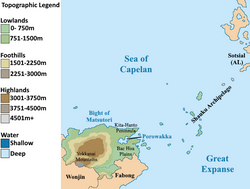
Northern most point: 15.710N, Southern most point: 7.174N Oyashima has five types of climates: tropical wet, tropical dry, humid subtropical and Mediterranean (both are in higher-altitude areas) characterized by relatively high temperature, oppressive humidity and plenty of rainfall. There are two seasons in the country, the wet season and the dry season, based upon the amount of rainfall. This is also dependent on location in the country as some areas experience rain all throughout the year. Based on temperature, the warmest months of the year are March through October; the winter monsoon brings cooler air from November to February. May is the warmest month, and January, the coolest.
Climate and environment

| Category | Jan | Feb | Mar | Apr | May | Jun | Jul | Aug | Sep | Oct | Nov | Dec |
|---|---|---|---|---|---|---|---|---|---|---|---|---|
| Min | 20.67 | 20.57 | 21.09 | 21.98 | 22.55 | 22.35 | 22.03 | 22.07 | 21.97 | 21.76 | 21.64 | 21.31 |
| Mean | 24.72 | 24.88 | 25.71 | 26.68 | 27.02 | 26.47 | 25.94 | 25.92 | 25.9 | 25.83 | 25.65 | 25.21 |
| Max | 28.82 | 29.24 | 30.38 | 31.42 | 31.54 | 30.65 | 29.9 | 29.82 | 29.87 | 29.96 | 29.72 | 29.16 |
| Precipitation (mm) | 136.93 | 96.05 | 92.56 | 97.66 | 188.95 | 248.37 | 291.02 | 310.68 | 281.05 | 280.74 | 230.51 | 206.84 |
Relative humidity is high in Oyashima. A high amount of moisture or vapor in the air makes hot temperatures feel hotter. This quantity of moisture is due to different factors – the extraordinary evaporation from the seas that surrounds the country on northern and eastern sides, to the different Prevailing Winds in the different seasons of the year, and finally, to the abundant rains so common in a tropical country. The first may be considered as general causes of the great humidity, which is generally observed throughout the year. The last two may influence the different degree of humidity for the different months of the year and for the different regions of the archipelago.
The climate of the country is divided into two main seasons:
- the rainy season, from June to the early part of October;
- the dry season, from the later part of October to May. The dry season may be subdivided further into (a) the cool dry season, from the later part of October to February; and (b) the hot dry season, from March to May. The months of April and May, the hot and dry months when schools are on their long break between academic years, is referred to coloquially as "summer" (after the summer season which lasts from June to August in most countries).
| Months | November–February | March–May | June–August | September–October |
|---|---|---|---|---|
| Rainfall | Dry
|
Wet
| ||
| Temperature | Cool
|
Hot
| ||
| Season | Cool Dry
|
Hot Dry
|
Rainy
| |
History
Early modern era
Sengoku Jidai

The Sengoku Jidai (Aeng. 'Warring States period') is the period in Oyashimane history in which civil wars and social upheavals took place almost continuously from the 1450s-1620s. The period was characterized by the overthrow of a superior power by a subordinate one. During this period, the traditional master-servant relationship between the lord and his vassals broke down, with the vassals eliminating the lord, internal clan and vassal conflicts over leadership of the lord's family, and frequent rebellion and puppetry by branch families against the lord's family. These events sometimes led to the rise of samurai to the rank of sengoku daimyo. It was also marked by the loosening of samurai culture, with people born into other social strata sometimes making a name for themselves as warriors and thus becoming samurai. It is assumed to end when, aided by the Ularien Trading Company (UTC), the Hideyoshi daimyo, Mariko Hideyoshi, consolidated power and established at first a shogunate (1617), and then crowned herself the empress of Kokkahito in 1646.
Sea Lords-Daimyo Wars
The 16th and early 17th centuries in Oyashima were a period of maritime chaos and power struggles known as the Sea Lord-Daimyo Wars. This era witnessed fierce clashes between the independent, seafaring warlords (Sea Lords) and the rising power of the land-based feudal lords (Daimyo). The Shauku Archipelago provided fertile ground for the rise of powerful maritime clans. Controlling strategic islands and crucial trade routes, these Sea Lords, like the Kurokami and the Akashi, amassed wealth and influence through a combination of trade, tolls, and – at times – piracy. Meanwhile, on the mainland, powerful Daimyo families like the Yamatori and the Fujiwaro consolidated their control over land. Unlike the Sea Lords, these Daimyo lacked strong naval forces but desired access to the lucrative maritime trade routes and the potential for overseas expansion. Tensions between the Sea Lords and the Daimyo began to simmer in the mid-16th century. Territorial disputes, competition over trade routes, and increasing Daimyo ambitions for naval dominance all contributed to the growing animosity. The tipping point came when the ambitious Daimyo, Lord Yamato Yoshinobu, declared his intent to unify Oyashima under his rule and demanded subservience from the Sea Lords.
The Sea Lord-Daimyo Wars were a series of complex conflicts spanning over four decades. Initial clashes favored the Sea Lords, who utilized their superior naval tactics and knowledge of the archipelagos treacherous waters. However, the Daimyo, with their larger armies and growing access to advanced weaponry (including newly introduced arquebuses from overseas), gradually gained the upper hand.
By the 1620s, the Sea Lord-Daimyo Wars had left the archipelago in a state of disarray. The Sea Lords were weakened, their alliances fractured, and the Daimyo remained locked in territorial disputes. This political instability presented a golden opportunity for the Ularien Trading Company (UTC), a powerful maritime force with a keen eye for expansion beyond western Audonia's Daria and X regions. The UTC, sensing an advantage, struck a deal with several disgruntled Daimyo. The company offered to build a formidable navy in exchange for a share of the spoils: the right to establish protectorates over any islands seized from the Sea Lords. The Daimyo, eager to tip the scales in their favor, readily agreed. The Company's navy, equipped with advanced weaponry and disciplined tactics from the Great Confessional War and experience in the colonization in western Audonia, proved devastatingly effective. The Sea Lords, accustomed to traditional naval warfare, were no match for the coordinated onslaught. One by one, their strongholds fell, and their influence waned.
Capitalizing on their success, the Company, with a charter from the Duchy of Marialianus, established a colony on the captured islands. This became the Far East Colony, a crucial foothold for the Duchy and a gateway to further expansion within Kokkahito. The UTC, through a combination of shrewd diplomacy and ruthless pragmatism, expanded the Far East Colony's reach. They employed a multifaceted strategy: Protectorates: The Company skillfully negotiated protectorate agreements with numerous Daimyo and Sea Lords, effectively placing them under the Duchy's and the company's control. Doctrine of Lapse: The Company readily exploited any perceived weakness in local leadership. If a Daimyo's lineage died out or appeared vulnerable, the company invoked the "doctrine of lapse," claiming the territory for the Far East Colony. Financial Maneuvers: The Company's increasing wealth allowed them to buy land titles and strategically bribe officials, further expanding their influence.
Establishment of Kokkahito
Fall of the Ai Dynasty and the rise of the Thu Loan Shogunate
Nakame Dynasty
Yuganagawa Protectorate
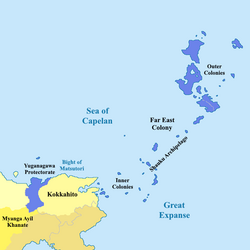
Far East Colony

The Far East Colony was established by the Ularien Trading Company in 1638 to put pressure on the northern flank of the Myanga Ayil Khanate. The original colonial effort was a series of military outposts in the lands of the various factions along the border of the Myanga Ayil Khanate from where they made incursions. Using their diplomatic prowess, the colonial administrators gained more and more land through protectorates, doctrine of lapse, buying titles and bribing officials as they worked their way inland.
Politics
Oyashima is governed by the Constitution of 1992, which inaugurated the period of constitutional monarchy under the leadership of the Omo no Ryōshu (Aenglish: Lord of Lords).
Executive
The roles of head of state and head of government are consolidated in the position of the Omo no Ryōshu, who acts as Speaker for the Assembly and chief executive. The Ryōshu's power is checked by the Assembly of Lords, and the budget is primarily decided by the Assembly.
Assembly
The Assembly of Lords is a unicameral legislature of 147 representatives elected by local direct first past the post elections; administrative regions are organized partly along island lines, partly along clan lines, and partly along municipal lines. This results in a very unbalanced spread of political power that is concentrated in seven of the eleven major islands of the nation. Terms are six years with no limit to the number of terms, and every two years, roughly a third of the legislature is put up for elections.
Political Factions
Political allegiance in Oyashima is better reflected by faction than party, as there are 86 registered parties, the most relevant of which operate in three broad wings: the conservative, minarchist Homeland faction, the urbanite and centrist Five Islands faction, and the rural and clan-based All Isles faction. Each of these contains a fluctuating web of parties, with the Five Islands being the dominant faction and the Homeland faction being the predominant opposition.
Economy
Oyashima is a mixed economy developed country with a high-income economy and is the one of the most industrialized countries in Audonia, behind only Daxia. Oyashimane brands are internationally famous and garnered Oyashima's reputation for its quality electronics, ship building, automobiles, armaments, and other manufactured goods. Oyashima is also considered a hospitable tropical paradise with tourism making up 6.2% of the nation's GDP. Its massive investment in education has taken the country from mass illiteracy to a major international technological powerhouse since the 1980s. This occured as a result of massive Burgoignesc financial and cultural investment during and after Operation Kipling. The country's national economy benefits from a young and highly skilled workforce and is among the most educated countries in the world with one of the highest percentages of its citizens holding a tertiary education degree. Oyashima's economy was one of the world's fastest-growing from the early 1960s to the late 1990s and was still one of the fastest-growing developed countries in the 2000s. The Oyashimane economy is heavily dependent on international trade, and the country has one of the world's largest foreign-exchange reserves. Major sectors include shipbuilding and repair, automotive manufacturing, electronics manufacturing, armaments manufacturing, tourism, mining, and construction. Agriculture is present in Oyashima but it is not a primary contributor to the national economy. Throughout its history, especially during
Manufacturing
Shipbuilding and repair
Automobiles
Electronics
Armaments
Tourism
Tourism is an important sector for the Oyashimane economy. The travel and tourism industry contributed 6.2% to the country's GDP in 2032. Coastal tourism, encompassing beach and diving activities, constitutes 25% of the Oyashima's tourism revenue, serving as its primary income source in the sector. As of 2032, 5.23 million Oyashimane were employed in the tourism industry and as of September 2033, Oyashima generated $5.5 billion in revenue from tourists, coming mostly from Burgundie, Arcerion, and Tierrador. The country attracts an average of 8,360,682 foreign visitors a year. In 2029, foreign arrivals peaked at 12,260,913. Popular activities include: beaching and diving, hiking, biodiversity research and education, arts and crafts tourism, festivals, and eastern medical tourism. The most popular destinations are the white sand beaches of the northern coast and the island for local and foreign visitors. The western plateau on the mainland has become a popular hiking destination. The plateau has a wide range of flora and fauna, including over 272 bird species, 111 of which are endemic to the area.
Mining and mineral extraction
Oyashima is rich in mineral and geothermal resources. It has some of the largest deposits of gold, nickel, copper, silver, palladium, and chromite. Oyashima also has considerable silver, coal, gypsum, clay, limestone, marble, silica, and phosphate, and sulfur deposits which are actively mined. The country has harnessed the power of its geothermal resources to become a leader in clean energy production in Audonia. With a capacity of 7,928 megawatts, geothermal sources contribute a substantial 7.55% of the nation's total electricity generation. This not only reduces dependence on fossil fuels but also positions Oyashima as a champion for environmental sustainability in the most polluting continent on the planet. Oyashima's mining and mineral extraction sector plays a crucial role in the nation's economic development. It represents 4.3% of the GDP. The industry generates significant revenue, fosters job creation, and contributes to the advancement of various sectors that rely on these resources. It is generally considered a Mutsotorine venture with very few Oyash people engaging in the mining sector.
Dominant Players:
Hokkaido Kinzoku Kabushiki-gaisha: The Hokkaido Kinzoku company, (Aeng: North Sea Metals Company) is a major player in the extraction of gold, copper, and zinc. Established in the early 20th century, Hokkaido Kinzoku is the largest and wealthiest mining conglomerate in Oyashima. It has mines all over the country and employs 15,392 people in 18 mining operations. In the communities these mines are in, Hokkaido Kinzoku has historically dominated the civil, political, and economic life. They are the gold standard for company town development and maintenance in the country.
Shiretoko Chika Shigen Kaihatsu Kabushiki-gaisha: The Shiretoko Chika Shigen company (Aegn: Shiretoko Subsurface Resource Development Company) focuses on the extraction of nickel and chromite. Operating primarily on the southeastern coast of Oyashima, they are smaller with only 849 employees across 4 mining operations but they are known for their commitment to innovative mining technologies. They reinvest most of their profits in technological innovation and are therefore very efficient, sustainable, and safe.
Oyashi Chichise Reshisu: The Oyashi Chichise company (Aeng: Oyashi Ancestral Resources Corporation) is the only Oyash-owned mining corporation. It prioritizes the extraction of precious metals like gold and silver while upholding traditional Ainu values of respect for the environment. They are actively involved in community outreach programs and environmental restoration projects.
Ryujin Kogyo Kabushiki-gaisha: The Ryujin Kogyo company (Aeng: Dragon God Industries Company), focuses on the extraction of industrial minerals like gypsum, limestone, and clay. They are known for their efficient and large-scale mining operations that cater to the construction and manufacturing sectors. In 1995 they partnered with Estia-Odoneru Gypsum, Salt, and Aggregate to further develop and modernize its mines.
Global Rim Minerals Inc.: Global Rim is a international joint venture, with a significant investment from Oyashima and Burgundie, which specializes in the exploration and extraction of rare earth elements and critical minerals essential for modern technologies in the ocean beds around Oyashima.
Agriculture
-
A coconut grove
-
A banana plantation
-
Vast sugarcane plantations
-
A rice field
-
Pineapples in a market
Corn, rise, cassava, bananas, mangos, pineapples, coconut, sugarcane,
Agriculture is a small part of the Oyashimane economy, but it is critical to the food security of some of the interior provinces. The countries main crops include staples like jasmine rice, cassava, and corn, but it also export crops such as cavendish banana, pineapple and pineapple products, coconut and coconut by-products, sugar, and Template:Mango. The sector continues to face challenges, however, due to the pressures of a growing population. Oyashima is one of the most vulnerable agricultural systems to monsoons and other extreme weather events, which are expected to create more uncertainty as climate change affects the Philippines. However, the government has worked with the Government of Burgundie to develop local policy measures that are some of the most proactive in risk reduction.

Since the start of the 21st century, Oyashima has followed global trends on sustainability and recycling. This has, since the 2020s especially, created a secondary industry on the back of the agricultural field that is using agricultural waste, especially coconut husks, for new purposes. Coconut husk recycling and upcycling is almost as profitable as coconut growing in 2034.
Construction
Infrastructure
Rail
Oyashima uses Standard gauge, 1,435 mm (4 ft 8+1⁄2 in) as most of its rail infrastructure has been under the auspices of Burgundie and its sphere of influence in the Audonia, who all use that rail gauge.


























